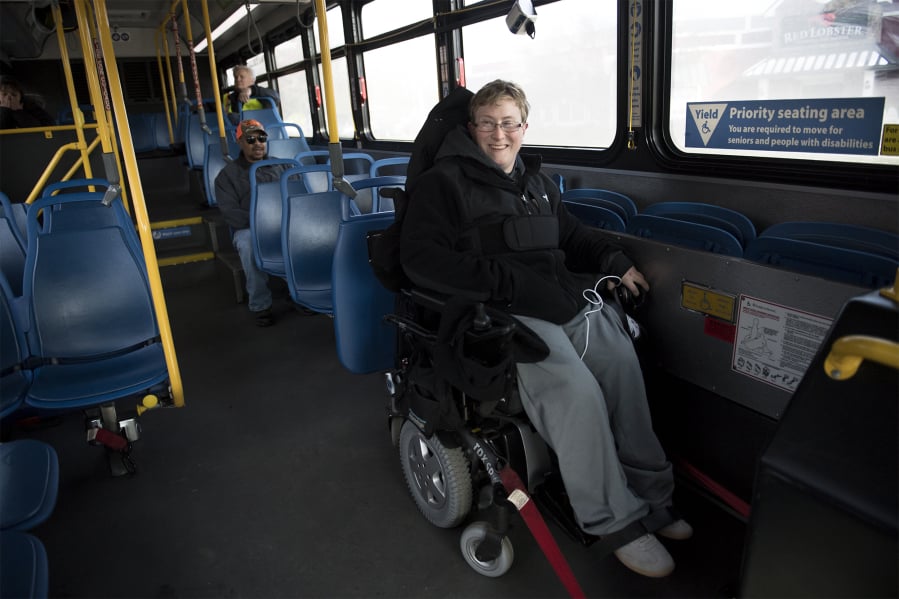The bus is a public place. Commuters should be able to steel themselves for the day ahead, decompress from the day before or simply get where they’re going, all without loud, one-sided cellphone conversations or a seatmate’s encroaching knee.
To gently remind riders of that, C-Tran partnered with a senior-level communications class at Washington State University Vancouver for its new Ride with Care rider-etiquette campaign.
The campaign isn’t the most expansive — C-Tran has posted new bus ads, along with content online and on social media — nor is it meant to counter any egregious spike in bad manners, C-Tran spokeswoman Christine Selk said.
“It’s basically a reminder to everybody who rides that the bus is a communal area,” she said. “We all have a little bit of a part to play in that.”
The campaign is meant to address the recurring behavior problems the agency hears about from bus riders and staff.
“None of the rules are new,” Selk said. “These are all pretty long-standing, with the exception of no big bags with cans on the buses.”
The transit agency put together the campaign with the help of professor Narayanan Iyer’s marketing campaign class last fall. The new in-vehicle ads are already posted aboard C-Tran’s fleet.
The class is part of the Integrated Strategic Communication program at the school. For the final class, students work with a real-world client on a marketing or public relations campaign. Iyer is the program director at the Vancouver campus.
C-Tran approached Iyer’s class last fall about helping with an ad campaign.
“They wanted us to figure out how to come up with a rider etiquette solution for C-Tran,” Iyer said. “The problem was most of my students haven’t ridden a C-Tran bus.”
A lot of the early work, he said, ended up being research. They took photographs, interviewed riders and drivers, reviewed existing C-Tran marketing and, Iyer said, spent a lot of time riding the bus.
“We took careful note of everything,” Iyer said.
The students’ task was to learn about their audience.
“Everybody kind of hopped on board and got really into it,” Hadley Phillips, a senior who took the class last fall, said.
Part of the challenge was to craft a message that was clear and direct, while comprehensible to any kind of rider, Phillips said.
“Trying to reach that many people and have it be effective was difficult,” she said.
The class put together different plans and made marketing content, pitched it to C-Tran staff, then focused its work on the one the agency liked.
A lot like a real ad agency would, Iyer said.
“This class is meant to help you build up that portfolio, so when you graduate in six months you can talk about the different kinds of projects, real-world clients you worked with,” he said.
Cameron Kast, another senior who took the course last fall, agreed.
“You spend the four years or two specializing your degree, then you get into this 400-level class and see how it really works,” Kast said. “Actually being able to put your knowledge to work was something really fascinating and really cool.”




